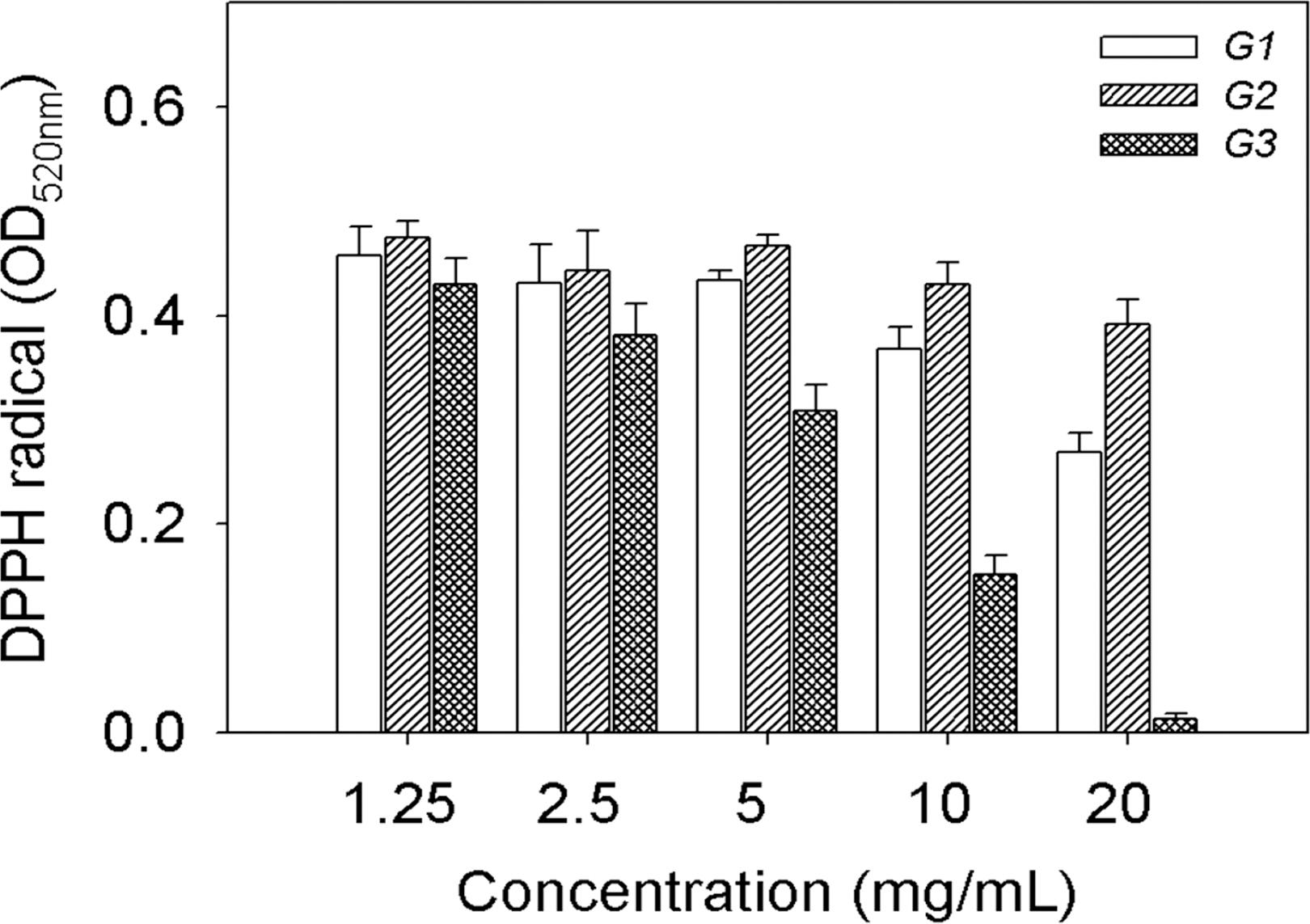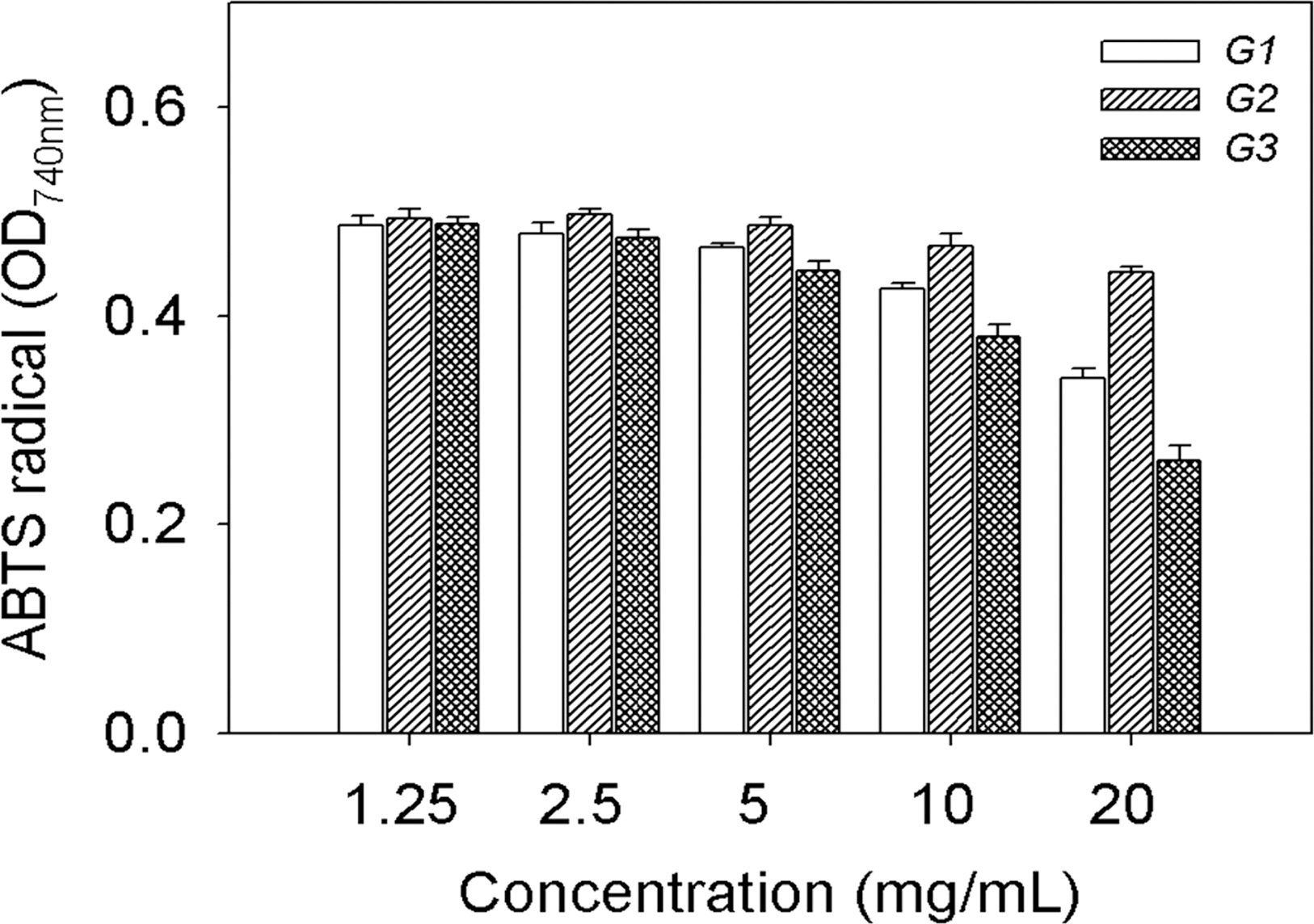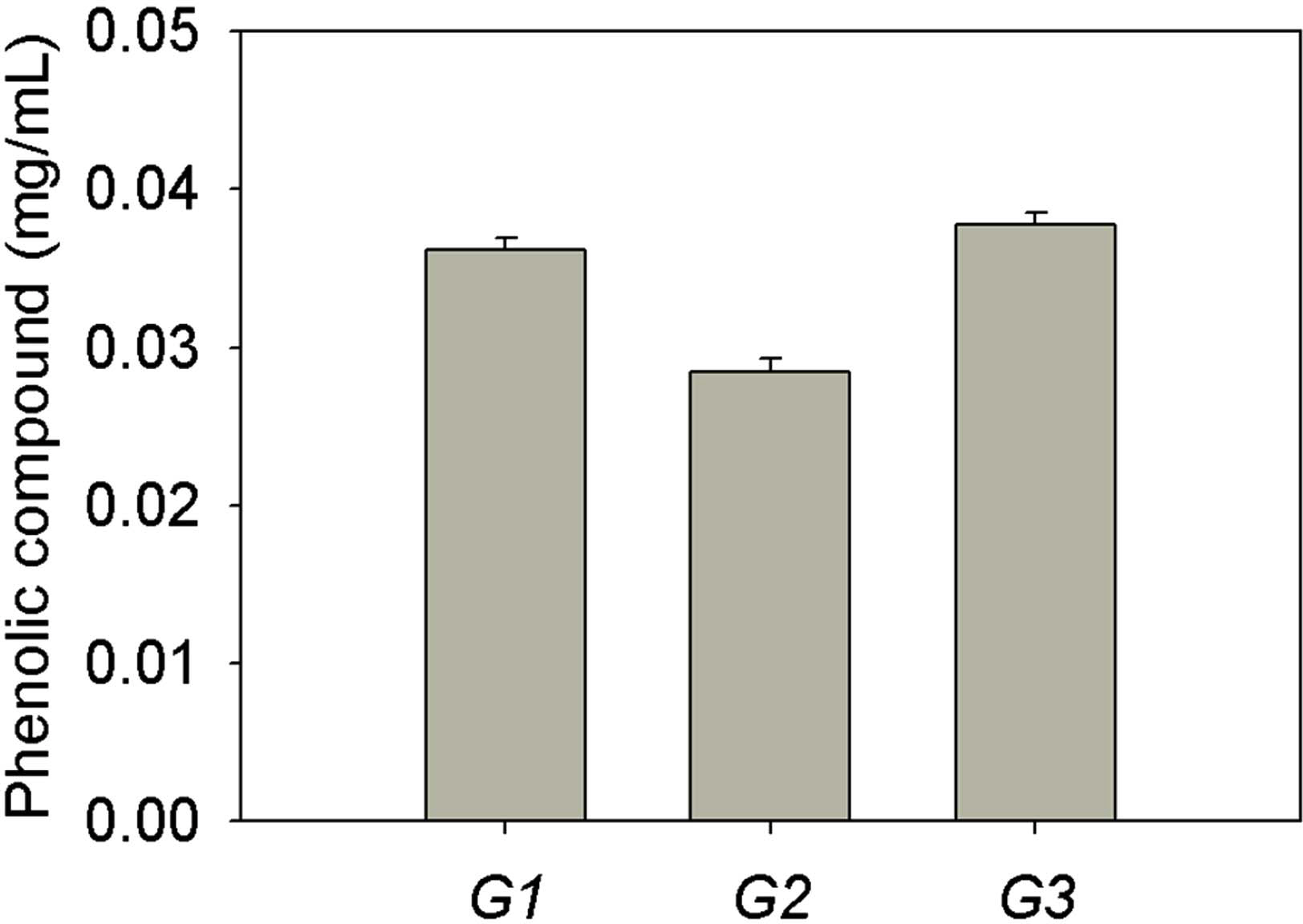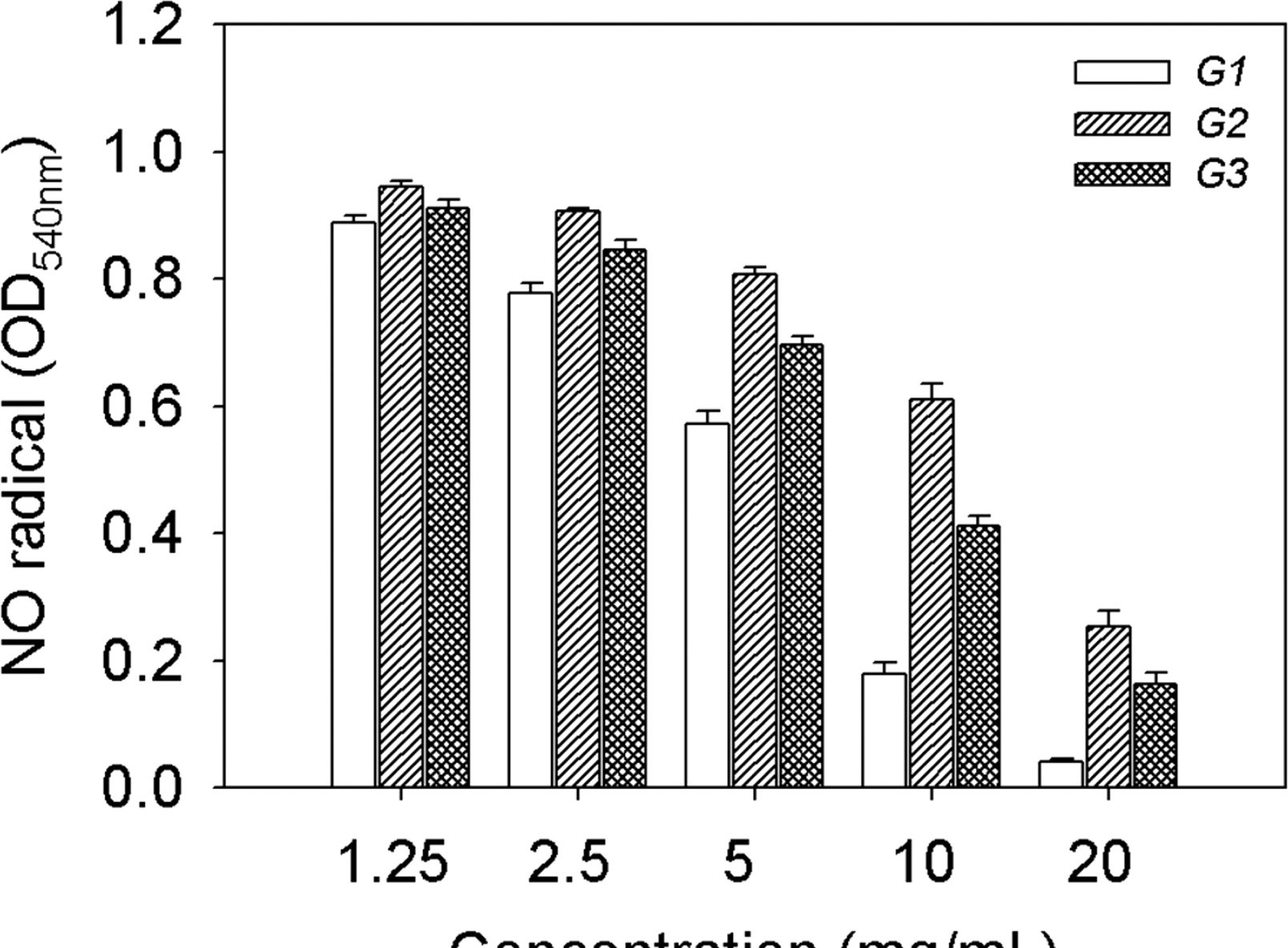Afreen, S., & Fatma, T. (2018). Extraction, purification and characterization of phycoerythrin from Michrochaete and its biological activities.
Biocatalysis and Agricultural Biotechnology,
13:84-89.

Ahn, S. M., Hong, Y. K., Kwon, G. S., & Son, H. Y. (2011). Evaluation of Antioxidant and Nitrite Scavenging Activity of Seaweed Extracts.
Journal of Life Science,
21(4), 576-583.

Amaeze, O. U., Ayoola, G. A., Sofidiya, M. O., Adepoju-Bello, A. A., Adegoke, A. O., & Coker, H. A. B. (2011). Evaluation of antioxidant activity of Tetracarpidium conophorum (Müll. Arg) Hutch & Dalziel leaves.
Oxidative Medicine and Cellular Longevity,
2011:1-7.

Blois, M. S. (1958). Antioxidant determination by the use of a stable free radical.
Nature,
181:1199-1200.

Bhaskar, H., & Balakrishnan, N. (2009). In vitro antioxidant property of laticiferous plant species from western ghats Tamilnadu, India.
International Journal of Health Research,
2(2), 163-170.

Cho, M. L., Lee, D. J., & You, S. G. (2012). Radical Scavenging Activity of Ethanol Extracts and Solvent Partitioned Fractions from Various Red Seaweeds.
Ocean and Polar Research,
34(4), 445-451.

Choi, M. H., & Shin, H. J. (2015). Anti-oxidative and Anti-melnogenesis Effects of Buleberry Extract. Korean Journal of Aesthetics and Cosmetics Society, 13(2), 261-266.
Folin, O., & Denis, W. (1912). On phosphotungstic-phosphomolybdic compounds as color reagents.
Journal of Biological Chemistry,
12(2), 239-243.

Floegel, A., Kim, D. O., Chung, S. J., Koo, S. I., & Chun, O. K. (2011). Comparison of ABTS/DPPH assays to measure antioxidant capacity in popular antioxidant-rich US foods.
Journal of Food Composition and Analysis,
24(7), 1043-1048.

Gutfinger, T. (1981). Polyphenols in olive oils.
Journal of the American Oil Chemists' Society,
58(11), 966-968.

Jagetia, G. C., & Baliga, M. S. (2004). The evaluation of nitric oxide scavenging activity of certain Indian medicinal plants in vitro: a preliminary study.
Journal of Medicinal Food,
7(3), 343-348.


Jimenez-Escrig, A., & Cambrodon, I. G. (1999). Nutritional evaluation and physiological effects of edible seaweeds.
Archivos Latinoamericanos de Nutricion,
49(2), 114-120.

Karmakar, I., Dolai, N., Saha, P., Sarkar, N., Bala, A., & Haldar, P. K. (2011). Scavenging activity of Curcuma caesia rhizome against reactive oxygen and nitrogen species.
Oriental Pharmacy and Experimental Medicine,
11(4), 221-228.

Kim, H. S., Boo, S. M., Lee, I. K., & Son, C. H.. (2013). National list of species of Korea: marine algae Incheon, Ministry of Environment's National Bio-Resource Center.
Kim, S. J., Lee, K. S., Moh, S. H., Park, J. B., Auh, C. K., Chung, Y. J., Ryu, T. K., & Lee, T. K. (2013). Phenolic Contents and Anti-oxidant Activities of Six Edible Seaweeds.
Journal of the Korea Academia-Industrial Cooperation Society,
14(6), 3081-3088.

Kim, Y. N.. (2003). Studies on the technology development for the cultivation of gracilaria chorda Jeollanam-do Province, Jangheung Fisheries Technology Management Office, Yeosu Regional Maritime Affairs and Fisheries Administration.
Kim, Y. S., Lee, S. J., Hwang, J. W., Kim, E. H., Park, P. J., & Jeon, B. T. (2011). Antioxidant Activity and Protective Effects of Extracts from Helianthus tuberosus L. Leaves on t-BHP Induced Oxidative Stress in Chang Cells.
Journal of the Korean Society of Food Science and Nutrition,
40(11), 1525-1531.

Kwak, C. S., Kim, S. A., & Lee, M. S. (2005). The Correlation of Antioxidative Effects of 5 Korean Common Edible Seaweeds and Total Polyphenol Content.
Journal of the Korean Society of Food Science and Nutrition,
34(8), 1143-1150.

Lee, D., Nishizawa, M., Shimizu, Y., & Saeki, H. (2017). Anti-inflammatory effects of dulse (Palmaria palmata) resulting from the simultaneous water-extractionion of phycobiliproteins and chlorophylla.
Food Research International,
100:514-521.


Lee, M. H. (2019). The antioxidation effect of Passiflora edulis f. edulis rind extract and its influence on cell bioactivity. Master's thesis, Kunkuk University, Seoul.
Lee, M. Y., Yoo, M. Y., Whang, Y. J., Jin, Y. J., Hong, M. H., & Pyo, Y. H. (2012). Vitamin C, Total Polyphenol, Flavonoid Contents and Antioxidant Capacity of Several Fruit Peels.
Korean Journal of Food Science and Technology,
44(5), 540-544.

Lee, Y. P.. (2002). catalogue of the seaweeds in Korea Jeju, Jeju National University Press.
Norton, T. A., Melkonian, M., & Andersen, R. A. (1996). Algal biodiversity.
Phycologia,
35:308-326.

Othman, R., Amin, N., Sani, M., Fadzillah, N., & Jamaludin, M. A. (2018). Carotenoid and chlorophyll profiles in five species of Malaysian seaweed as potential halal active pharmaceutical ingredient (API).
Int. J. Adv. Sci. Eng. Inf. Technol,
8(4-2), 1610-1616.

Poljŝak, B., Dahmane, R. G., & Godić, A. (2012). Intrinsic skin aging: the role of oxidative stress. Acta Dermatovenerol Alp Pannonica Adriat, 21(2), 33-36.
Rajurkar, N. S., & Hande, S. M. (2011). Estimation of phytochemical contents and antioxidant activity of some selected traditional Indian medicinal plants.
Indian Journal of Pharmaceutical Sciences,
73(2), 146.



Re, R., Pellegrini, N., Proteggente, A., Yang, M., & Rice-Evans, C. (1975). Antioxidant activity applying an improved ABTS radical cationdecolorization assay.
Free Radic. Biol. Med.,
26:1231-1237.

Rorald, W. (1975). Naturally occurring nitrate in food. J. Jpn. Soc. Food Agric, 26:1735-1742.
Rosemary, T., Arulkumar, A., Paramasivam, S., Mondragon-Portocarrero, A., & Miranda, J. M. (2019). Biochemical, micronutrient and physicochemical properties of the dried red seaweeds Gracilaria edulis and Gracilaria corticata.
Molecules,
24(12), 2225.


Scalzo, J., Politi, A., Pellegrini, N., Mezzetti, B., & Battino, M. (2005). Plant genotype affects total antioxidant capacity and phenolic contents in fruit.
Nutrition,
21(2), 207-213.


Seo, K. Y., Lee, S. W., Park, S. J., Kim, S. C., Son, I. C., Hwang, S. Y., & Ahn, S. H. (2010). Biological Activities of Hominis Placenta Herbal Acupuncture prepared by Hydrochloric Acid Hydrolysis.
Journal of Pharmacopuncture,
13(2), 5-12.

Walker, R. (1990). Nitrates, nitrites and N-nitroscompounds a review of the occurrence in food and diet and the toxicological implications.
Food additives and Contaminants,
7(6), 717-768.


Wang, L., Cui, Y. R., Yang, H. W., Lee, H. J., Ko, J. Y., & Jeon, Y. J. (2019). A mixture of seaweed extractions and glycosaminoglycans from sea squirts inhibits α-MSH-induced melanogenesis in B16F10 melanoma cells. Fisheries and Aquatic Sciences, 22(1), 1-8.
Wu, Q., Fu, X. P., Sun, L. C., Zhang, Q., Liu, G. M., Cao, M. J., & Cai, Q. F. (2015). Effects of physicochemical factors and in vitro gastrointestinal digestion on antioxidant activity of R-phycoerythrin from red algae Bangia fusco purpurea.
International Journal of Food Science & Technology,
50(6), 1445-1451.

Yoo, K. M., Kim, D. O., & Lee, C. Y. (2007). Evaluation of Different Methods of Antioxidant Measurement. Food Science and Biotechnology, 16(2), 177-182.
Zang, F., Qin, S., Ma, C., Li, W., & Lin, J. (2020). Structure, function and applications of phycoerythrin: a unique light harvesting protein in algae.
Chinese Science Bulletin,
65(7), 565-576.








 PDF Links
PDF Links PubReader
PubReader ePub Link
ePub Link Full text via DOI
Full text via DOI Download Citation
Download Citation Print
Print






